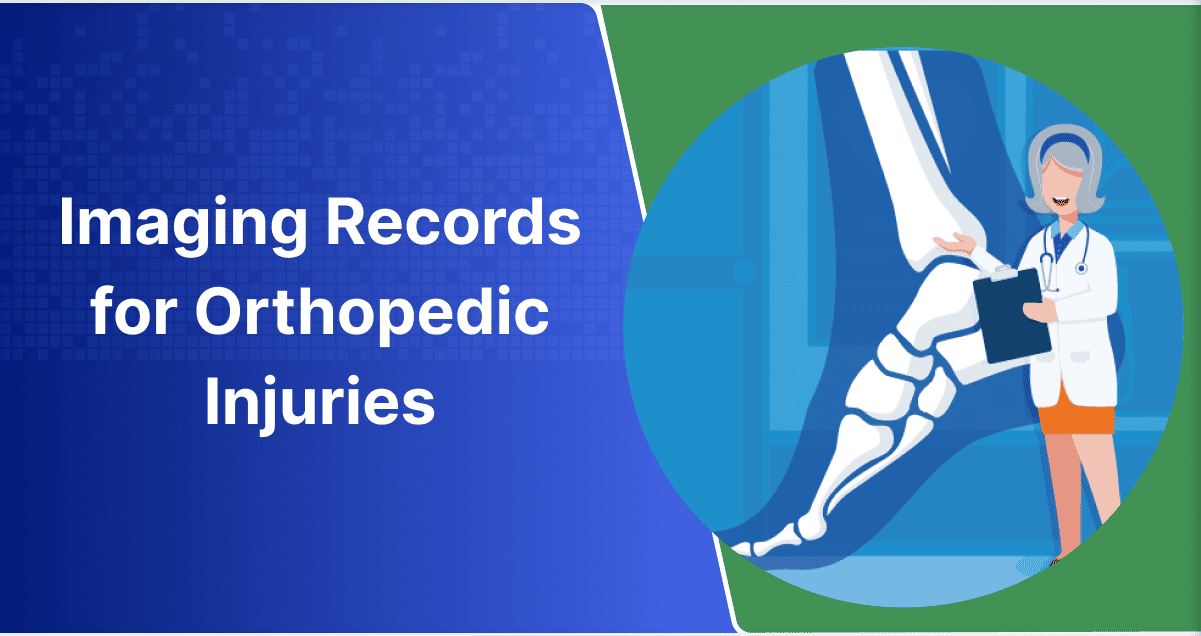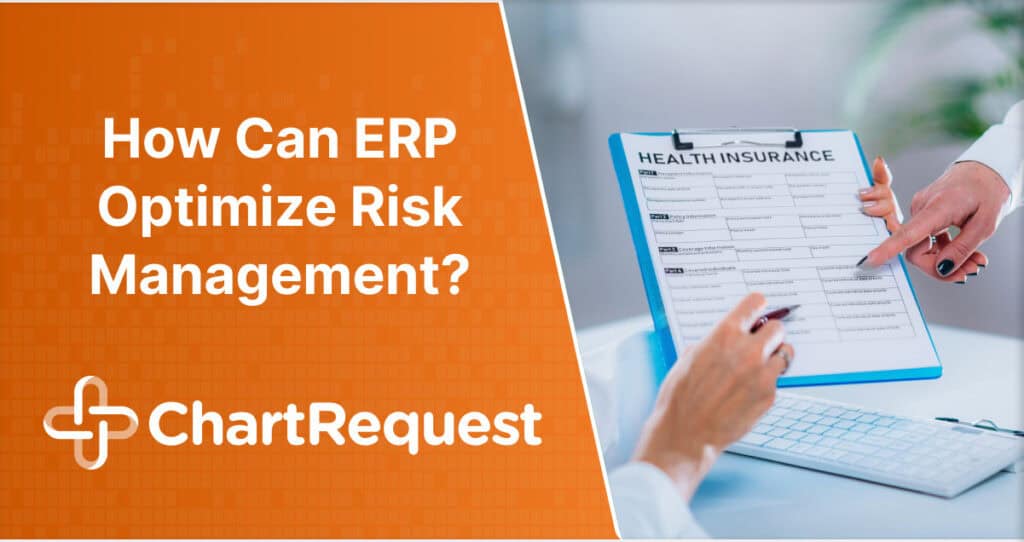Imaging records play an important role in diagnosing and treating orthopedic injuries.
Every day, we push our bodies to do some of the most unimaginable things. Be it sports, routine tasks, or occupational demands, our bodies are always active.
These daily hustle and bustle can sometimes lead to physical injuries, unfortunately. Your bones, joints, and muscles can suffer and affect your lifestyle if not treated.
This is where healthcare images come in to help diagnose orthopedic injuries accurately.
Techniques ranging from X-rays to MRI scans offer essential insights into these injuries. They give healthcare providers better insight into the state of the injury.
Understanding the right timing aids in swift and precise treatment. This highlights the significance of streamlined medical record exchanges in healthcare.
Let’s explore what situations warrant medical imaging record requests. You’ll also discover how Chartrequest works in the background to make this process smooth and secure.
Orthopedic Injuries Overview
Orthopedic injuries are damages or disorders affecting the musculoskeletal system, including bones, muscles, ligaments, tendons, and joints.
These are the unexpected setbacks that can occur during our day-to-day activities. They range from sprained ankles to more severe conditions like ACL tears.
These injuries, which include any harm to our musculoskeletal system, often arise from accidents or trauma.
11 Common Orthopedic Injuries:
These 11 common injuries range from sudden missteps in sports to the gradual wear and tear of daily life. Each tells a story of our body’s resilience and vulnerability. It also underscores the need for awareness and care.
Below are the types of physical injuries that often need medical imaging.
1. Sprained Ankle
Sprained ankles often occur in sports or accidental missteps. People can sprain their ankle when they overstretch or tear the supporting ligaments.
This results in varying degrees of pain, swelling, and bruising. The patient will often struggle to bear weight or move their ankle freely. Immediate treatment usually involves rest, ice, compression, and elevation.
2. ACL Tear
The anterior cruciate ligament, or ACL, is crucial for knee stability. It can tear during activities requiring sudden stops or changes in direction. Soccer or basketball players often get this injury.
This is characterized by a popping sound, followed by pain, swelling, and a feeling of instability in the knee. Treatment can range from physical therapy to reconstructive surgery, depending on the severity.
3. Meniscus Tear
The meniscus is a piece of cartilage in the knee that cushions and stabilizes the joint. It can tear if a person twists their knee while bearing weight.
Symptoms for this orthopedic injury include pain, swelling, stiffness, and difficulty straightening the knee. Treatment varies from rest and physical therapy. They might also need surgical repair, depending on the tear’s size and location.
4. Plantar Fasciitis
This common cause of heel pain arises from inflammation of the plantar fascia, the ligament connecting the heel to the toes.
This orthopedic injury is often seen in runners and people who stand for long periods. Symptoms include a stabbing pain, particularly pronounced in the morning. Treatment includes rest, stretching exercises, and proper footwear.
5. Shoulder Dislocation and Labral Tear
A shoulder dislocation occurs when the upper arm bone pops out of the shoulder socket. It is often followed by a tear in the cup-shaped rim of the cartilage called the labrum. It’s the lines that reinforce the ball-and-socket joint of the shoulder.
This injury causes intense pain and arm immobility. Treatment involves putting the shoulder back in place, followed by rest and physical therapy.
6. Rotator Cuff Tear
This injury involves a tear in the muscles and tendons surrounding the shoulder joint. Rotator cuff tear is either caused by a traumatic event or repetitive motion over time.
Symptoms include pain, especially at night, and weakness in the arm. Treatment ranges from physical therapy to surgery, depending on the tear’s severity.
7. Tennis Elbow
An injury caused by overuse of the forearm muscles and tendons. Tennis elbow results in pain and tenderness on the outside of the elbow. It’s common in athletes and people with jobs involving repetitive arm movements.
Treatment includes rest, ice, anti-inflammatory medications, and physical therapy.
8. Carpal Tunnel Syndrome
The median nerve runs from the forearm into the middle of the palm. Carpal Tunnel Syndrome develops because of repetitive wrist motions that put pressure on the nerve.
Symptoms include numbness, tingling, and weakness in the hand. Treatment ranges from wrist splinting to surgery, depending on the condition’s severity.
9. Wrist or Foot Fracture
A fall onto an outstretched hand or foot can cause a fracture. Symptoms include severe pain, swelling, and inability to move the affected limb. Treatment depends on the fracture’s severity and location. The patient might need casting or surgery to heal.
10. Stress Fracture
Stress fractures are small cracks in a bone, often caused by overuse, such as in running. They result in pain that worsens with activity. Treatment usually involves rest and avoiding high-impact activities until the bone heals.
11. Compression Fracture
A type of physical injury that occurs in the spine due to osteoporosis. Compression fractures happen when the bone weakens and collapses. They can cause pain, reduce height, and create a hunched posture.
Treatment may involve pain management, physical therapy, and in severe cases, surgery.
In 2013 alone, over 2.5 million elderly patients had non-fatal falls that required emergency room visits.
This staggering number highlights how common and impactful these injuries can be. Orthopedic injuries touch lives across all ages. It doesn’t matter if it’s a young athlete with a sports injury or an elderly with aging bones.
Understanding the causes and knowing when to seek medical help can be crucial in managing these injuries effectively.
The Role of Diagnostic Imaging in Orthopedic Injuries
Orthopedic treatment is forever changed with the coming of medical imaging.
These images offer a window into the body and bring clarity and direction for both patients and healthcare providers.
Let’s explore the benefits and the different types of imaging tools in treating injuries.
5 Key Benefits of Diagnostic Imaging
- Clear diagnosis
The biggest advantage of imaging lies in its ability to identify the nature and extent of an injury with clarity. This accuracy forms the foundation for developing targeted treatment plans, so it’s crucial. - Tailored treatments
With a clear picture of the injury, doctors can create a treatment plan that fits perfectly, like a key in a lock. This means better care and quicker recovery. - Track progress
Diagnostic imaging is vital for initial diagnosis and tracking the healing process. Doctors can keep an eye on and ensure recovery is progressing as anticipated. Adjusting treatment plans is also easier this way. - Injury prevention and management
Imaging reveals the extent of an injury. Doctors can better advise patients on safe activities during recovery to prevent further damage. - Guiding surgeries
Imaging acts like a blueprint when performing surgeries. Surgeons can better plan and improve the chances of a successful operation.
Types of Imaging Used
- X-Rays
A fundamental imaging technique in orthopedic diagnostics. X-rays are particularly adept at evaluating bone-related injuries. They give insights into fractures and joint conditions. These are great for a quick look at bones, like checking for fractures. - MRI Scans
Magnetic Resonance Imaging is invaluable for its high-resolution imaging of soft tissues. Doctors can look at ligaments, tendons, and muscles using these images, which is crucial for diagnosing complex soft tissue injuries. - CT Scans
These images provide a 360-degree view of an injury. This makes it very helpful for complex bone issues. - Ultrasound
This technique uses sound waves to create images. They’re particularly useful for injuries to muscles and tendons. - Bone Scans
These scans are integral for a holistic assessment of bone health. They detect and track various conditions such as fractures, infections, or tumors.
These imaging techniques are invaluable tools in treating orthopedic injuries.
They bring clarity to the situation and guide treatment decisions. Everyone involved in the care process can better understand exactly what’s happening inside the body.
This also means better care, smarter treatments, and a smoother journey back to health.
8 Reasons to Request Medical Imaging Records
Imaging plays a pivotal role in understanding orthopedic injuries., and knowing when to request these records is crucial for timely and effective treatment.
Let’s explore 8 key situations where requesting imaging records is essential:
- Suspected fractures or bone injuries
Severe pain, swelling, a visible deformity, or loss of function can indicate a broken bone. Imaging here is vital to confirm the fracture and plan the appropriate treatment. - Chronic pain or discomfort
Do not ignore persistent pain that intensifies with activity or disturbs your sleep because it could be a hidden injury or a degenerative condition. Imaging can help identify the underlying causes. - Joint problems
Issues like joint pain, swelling, stiffness, or limited movement should be examined because they can signal more serious conditions like arthritis or cartilage damage. - After a traumatic injury:
Accidents, falls, or sports-related impacts can cause various orthopedic injuries. Imaging is essential to assess the full extent of damage and determine the best course of action. - Unexplained symptoms
Imaging can be a crucial diagnostic tool to uncover the root of the problem. When symptoms like pain, swelling, or numbness don’t have an obvious cause, this tool can shed light. - Monitoring progress
Imaging goes beyond diagnosing. Images are also used to track the healing process of a fracture or after surgery. They’re also used to monitor chronic conditions like osteoarthritis over time. - Guiding treatment plans
Imaging provides detailed insights into the current state of the patient’s injury. This can be used to decide the most effective treatment approach. - Pre-surgical planning
Imaging offers surgeons a detailed internal view of complex orthopedic injuries. This can aid them in planning the procedure with greater precision and confidence.
In each of these scenarios, timely imaging aids in accurate diagnosis. Additionally, it ensures that the treatment path fits the patient’s specific needs.
ChartRequest: Revolutionizing Medical Record Exchange
In orthopedic care, timely access to imaging records is critical because it impacts treatment plan creation and delivery.
When you cannot access imaging records fast enough, you’re prolonging your patient’s suffering.
This is where ChartRequest comes in.
We are transforming the way healthcare exchanges medical records with our ROI platform. We do this by ensuring quicker and more efficient access to medical information than ever before.
Find out how ChartRequest can boost your clinical practice:
- Streamlined Access to Orthopedic Imaging Records
The rapid availability of imaging records like X-rays, MRI, and CT scans is crucial for orthopedic injuries. These records are essential in diagnosing and formulating treatment plans for musculoskeletal conditions. ChartRequest specifically addresses this urgency in orthopedic care by streamlining the release of information. - Customized ROI Requests for Orthopedic Needs
ChartRequest offers tailored ROI solutions. Our plans include self-service and full-service options. Both are designed to meet the diverse needs of healthcare professionals in orthopedics.
This flexibility allows for a more efficient management of imaging records, saving time and enhancing the workflow. - HIPAA Compliant Every Step of The Way
Steep HIPAA fines weigh heavily on the shoulders of healthcare professionals when dealing with records. ChartRequest removes this burden by providing a secure ROI platform for orthopedic practices. Every part of our ROI process is rooted in HIPAA regulations to ensure we minimize risk. - Enhancing Orthopedic Patient Care
ChartRequest significantly aids healthcare providers in making faster, more precise diagnoses by accelerating the retrieval of imaging records for orthopedic cases.
This efficiency leads to quicker treatment decisions, less patient discomfort, and improved recovery outcomes.
Streamline Your Medical Imaging Request with ChartRequest Today
As we move forward, the way we share health information is changing for the better, and ChartRequest is at the forefront of this change.
We’re making sure that getting medical records, especially for orthopedic care, is quick, safe, and forward-thinking. This means less waiting and more time for doctors to focus on what matters: patient care.
Ready to experience the future of healthcare information exchange? Join ChartRequest now and step into a world where medical records move quickly and safely, directly benefiting patient care.








